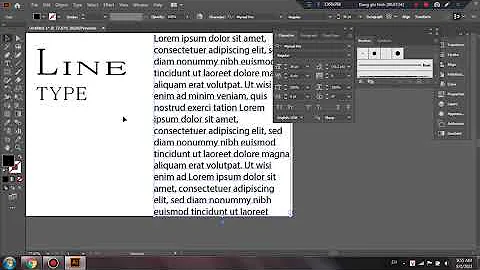What's the "big idea" behind compojure routes?
Solution 1
Compojure explained (to some degree)
NB. I am working with Compojure 0.4.1 (here's the 0.4.1 release commit on GitHub).
Why?
At the very top of compojure/core.clj, there's this helpful summary of Compojure's purpose:
A concise syntax for generating Ring handlers.
On a superficial level, that's all there is to the "why" question. To go a bit deeper, let's have a look at how a Ring-style app functions:
A request arrives and is transformed into a Clojure map in accordance with the Ring spec.
This map is funnelled into a so-called "handler function", which is expected to produce a response (which is also a Clojure map).
The response map is transformed into an actual HTTP response and sent back to the client.
Step 2. in the above is the most interesting, as it is the handler's responsibility to examine the URI used in the request, examine any cookies etc. and ultimately arrive at an appropriate response. Clearly it is necessary that all this work be factored into a collection of well-defined pieces; these are normally a "base" handler function and a collection of middleware functions wrapping it. Compojure's purpose is to simplify the generation of the base handler function.
How?
Compojure is built around the notion of "routes". These are actually implemented at a deeper level by the Clout library (a spinoff of the Compojure project -- many things were moved to separate libraries at the 0.3.x -> 0.4.x transition). A route is defined by (1) an HTTP method (GET, PUT, HEAD...), (2) a URI pattern (specified with syntax which will apparently be familiar to Webby Rubyists), (3) a destructuring form used in binding parts of the request map to names available in the body, (4) a body of expressions which needs to produce a valid Ring response (in non-trivial cases this is usually just a call to a separate function).
This might be a good point to have a look at a simple example:
(def example-route (GET "/" [] "<html>...</html>"))
Let's test this at the REPL (the request map below is the minimal valid Ring request map):
user> (example-route {:server-port 80
:server-name "127.0.0.1"
:remote-addr "127.0.0.1"
:uri "/"
:scheme :http
:headers {}
:request-method :get})
{:status 200,
:headers {"Content-Type" "text/html"},
:body "<html>...</html>"}
If :request-method were :head instead, the response would be nil. We'll return to the question of what nil means here in a minute (but notice that it is not a valid Ring respose!).
As is apparent from this example, example-route is just a function, and a very simple one at that; it looks at the request, determines whether it's interested in handling it (by examining :request-method and :uri) and, if so, returns a basic response map.
What is also apparent is that the body of the route does not really need to evaluate to a proper response map; Compojure provides sane default handling for strings (as seen above) and a number of other object types; see the compojure.response/render multimethod for details (the code is entirely self-documenting here).
Let's try using defroutes now:
(defroutes example-routes
(GET "/" [] "get")
(HEAD "/" [] "head"))
The responses to the example request displayed above and to its variant with :request-method :head are like expected.
The inner workings of example-routes are such that each route is tried in turn; as soon as one of them returns a non-nil response, that response becomes the return value of the whole example-routes handler. As an added convenience, defroutes-defined handlers are wrapped in wrap-params and wrap-cookies implicitly.
Here's an example of a more complex route:
(def echo-typed-url-route
(GET "*" {:keys [scheme server-name server-port uri]}
(str (name scheme) "://" server-name ":" server-port uri)))
Note the destructuring form in place of the previously used empty vector. The basic idea here is that the body of the route might be interested in some information about the request; since this always arrives in the form of a map, an associative destructuring form can be supplied to extract information from the request and bind it to local variables which will be in scope in the route's body.
A test of the above:
user> (echo-typed-url-route {:server-port 80
:server-name "127.0.0.1"
:remote-addr "127.0.0.1"
:uri "/foo/bar"
:scheme :http
:headers {}
:request-method :get})
{:status 200,
:headers {"Content-Type" "text/html"},
:body "http://127.0.0.1:80/foo/bar"}
The brilliant follow-up idea to the above is that more complex routes may assoc extra information onto the request at the matching stage:
(def echo-first-path-component-route
(GET "/:fst/*" [fst] fst))
This responds with a :body of "foo" to the request from the previous example.
Two things are new about this latest example: the "/:fst/*" and the non-empty binding vector [fst]. The first is the aforementioned Rails-and-Sinatra-like syntax for URI patterns. It's a bit more sophisticated than what is apparent from the example above in that regex constraints on URI segments are supported (e.g. ["/:fst/*" :fst #"[0-9]+"] can be supplied to make the route accept only all-digit values of :fst in the above). The second is a simplified way of matching on the :params entry in the request map, which is itself a map; it's useful for extracting URI segments from the request, query string parameters and form parameters. An example to illustrate the latter point:
(defroutes echo-params
(GET "/" [& more]
(str more)))
user> (echo-params
{:server-port 80
:server-name "127.0.0.1"
:remote-addr "127.0.0.1"
:uri "/"
:query-string "foo=1"
:scheme :http
:headers {}
:request-method :get})
{:status 200,
:headers {"Content-Type" "text/html"},
:body "{\"foo\" \"1\"}"}
This would be a good time to have a look at the example from the question text:
(defroutes main-routes
(GET "/" [] (workbench))
(POST "/save" {form-params :form-params} (str form-params))
(GET "/test" [& more] (str "<pre>" more "</pre>"))
(GET ["/:filename" :filename #".*"] [filename]
(response/file-response filename {:root "./static"}))
(ANY "*" [] "<h1>Page not found.</h1>"))
Let's analyse each route in turn:
(GET "/" [] (workbench))-- when dealing with aGETrequest with:uri "/", call the functionworkbenchand render whatever it returns into a response map. (Recall that the return value might be a map, but also a string etc.)(POST "/save" {form-params :form-params} (str form-params))--:form-paramsis an entry in the request map provided by thewrap-paramsmiddleware (recall that it is implicitly included bydefroutes). The response will be the standard{:status 200 :headers {"Content-Type" "text/html"} :body ...}with(str form-params)substituted for.... (A slightly unusualPOSThandler, this...)(GET "/test" [& more] (str "<pre> more "</pre>"))-- this would e.g. echo back the string representation of the map{"foo" "1"}if the user agent asked for"/test?foo=1".(GET ["/:filename" :filename #".*"] [filename] ...)-- the:filename #".*"part does nothing at all (since#".*"always matches). It calls the Ring utility functionring.util.response/file-responseto produce its response; the{:root "./static"}part tells it where to look for the file.(ANY "*" [] ...)-- a catch-all route. It is good Compojure practice always to include such a route at the end of adefroutesform to ensure that the handler being defined always returns a valid Ring response map (recall that a route matching failure results innil).
Why this way?
One purpose of the Ring middleware is to add information to the request map; thus cookie-handling middleware adds a :cookies key to the request, wrap-params adds :query-params and/or :form-params if a query string / form data is present and so on. (Strictly speaking, all the information the middleware functions are adding must be already present in the request map, since that is what they get passed; their job is to transform it to be it more convenient to work with in the handlers they wrap.) Ultimately the "enriched" request is passed to the base handler, which examines the request map with all the nicely preprocessed information added by the middleware and produces a response. (Middleware can do more complex things than that -- like wrapping several "inner" handlers and choosing between them, deciding whether to call the wrapped handler(s) at all etc. That is, however, outside the scope of this answer.)
The base handler, in turn, is usually (in non-trivial cases) a function which tends to need just a handful of items of information about the request. (E.g. ring.util.response/file-response doesn't care about most of the request; it only needs a filename.) Hence the need for a simple way of extracting just the relevant parts of a Ring request. Compojure aims to provide a special-purpose pattern matching engine, as it were, which does just that.
Solution 2
There is an excellent article at booleanknot.com from James Reeves (author of Compojure), and reading it made it "click" for me, so I have retranscribed some of it here (really that's all I did).
There is also a slidedeck here from the same author, that answers this exact question.
Compojure is based on Ring, which is an abstraction for http requests.
A concise syntax for generating Ring handlers.
So, what are those Ring handlers ? Extract from the doc :
;; Handlers are functions that define your web application.
;; They take one argument, a map representing a HTTP request,
;; and return a map representing the HTTP response.
;; Let's take a look at an example:
(defn what-is-my-ip [request]
{:status 200
:headers {"Content-Type" "text/plain"}
:body (:remote-addr request)})
Pretty simple, but also quite low-level.
The above handler can be defined more concisely using the ring/util library.
(use 'ring.util.response)
(defn handler [request]
(response "Hello World"))
Now we want to call different handlers depending on the request. We could do some static routing like so :
(defn handler [request]
(or
(if (= (:uri request) "/a") (response "Alpha"))
(if (= (:uri request) "/b") (response "Beta"))))
And refactor it like this :
(defn a-route [request]
(if (= (:uri request) "/a") (response "Alpha")))
(defn b-route [request]
(if (= (:uri request) "/b") (response "Beta"))))
(defn handler [request]
(or (a-route request)
(b-route request)))
The interesting thing that James notes then is that this allows nesting routes, because "the result of combining two or more routes together is itself a route".
(defn ab-routes [request]
(or (a-route request)
(b-route request)))
(defn cd-routes [request]
(or (c-route request)
(d-route request)))
(defn handler [request]
(or (ab-routes request)
(cd-routes request)))
By now, we are beginning to see some code that looks like it could be factored, using a macro. Compojure provides a defroutes macro:
(defroutes ab-routes a-route b-route)
;; is identical to
(def ab-routes (routes a-route b-route))
Compojure provides other macros, like the GET macro:
(GET "/a" [] "Alpha")
;; will expand to
(fn [request#]
(if (and (= (:request-method request#) ~http-method)
(= (:uri request#) ~uri))
(let [~bindings request#]
~@body)))
That last function generated looks like our handler !
Please make sure to check out James post, as it goes into more detailed explanations.
Solution 3
For anybody who still struggled to find out what is going on with the routes, it might be that, like me, you don't understand the idea of destructuring.
Actually reading the docs for let helped clear up the whole "where do the magic values come from?" question.
I'm pasting the relevant sections below:
Clojure supports abstract structural binding, often called destructuring, in let binding lists, fn parameter lists, and any macro that expands into a let or fn. The basic idea is that a binding-form can be a data structure literal containing symbols that get bound to the respective parts of the init-expr. The binding is abstract in that a vector literal can bind to anything that is sequential, while a map literal can bind to anything that is associative.
Vector binding-exprs allow you to bind names to parts of sequential things (not just vectors), like vectors, lists, seqs, strings, arrays, and anything that supports nth. The basic sequential form is a vector of binding-forms, which will be bound to successive elements from the init-expr, looked up via nth. In addition, and optionally, & followed by a binding-forms will cause that binding-form to be bound to the remainder of the sequence, i.e. that part not yet bound, looked up via nthnext . Finally, also optional, :as followed by a symbol will cause that symbol to be bound to the entire init-expr:
(let [[a b c & d :as e] [1 2 3 4 5 6 7]]
[a b c d e])
->[1 2 3 (4 5 6 7) [1 2 3 4 5 6 7]]
Vector binding-exprs allow you to bind names to parts of sequential things (not just vectors), like vectors, lists, seqs, strings, arrays, and anything that supports nth. The basic sequential form is a vector of binding-forms, which will be bound to successive elements from the init-expr, looked up via nth. In addition, and optionally, & followed by a binding-forms will cause that binding-form to be bound to the remainder of the sequence, i.e. that part not yet bound, looked up via nthnext . Finally, also optional, :as followed by a symbol will cause that symbol to be bound to the entire init-expr:
(let [[a b c & d :as e] [1 2 3 4 5 6 7]]
[a b c d e])
->[1 2 3 (4 5 6 7) [1 2 3 4 5 6 7]]
Solution 4
I haven't started on clojure web stuff yet but, I will, here's the stuff I bookmarked.
- https://docs.google.com/Doc?docid=0AQqGP1CDN0uIZGhmZjJmcGZfMjNjNHIycGZu&hl=en
- https://github.com/weavejester/compojure/wiki/Routes-In-Detail
- http://mmcgrana.github.com/2010/03/clojure-web-development-ring.html
Solution 5
What's the deal with the destructuring ({form-params :form-params})? What keywords are available for me when destructuring?
The keys available are those that are in the input map. Destructuring is available inside let and doseq forms, or inside the parameters to fn or defn
The following code will hopefully be informative:
(let [{a :thing-a
c :thing-c :as things} {:thing-a 0
:thing-b 1
:thing-c 2}]
[a c (keys things)])
=> [0 2 (:thing-b :thing-a :thing-c)]
a more advanced example, showing nested destructuring:
user> (let [{thing-id :id
{thing-color :color :as props} :properties} {:id 1
:properties {:shape
"square"
:color
0xffffff}}]
[thing-id thing-color (keys props)])
=> [1 16777215 (:color :shape)]
When used wisely, destructuring declutters your code by avoiding boilerplate data access. by using :as and printing the result (or the result's keys) you can get a better idea of what other data you could access.
Related videos on Youtube
Sean Woods
Updated on July 08, 2022Comments
-
Sean Woods almost 2 years
I'm new to Clojure and have been using Compojure to write a basic web application. I'm hitting a wall with Compojure's
defroutessyntax, though, and I think I need to understand both the "how" and the "why" behind it all.It seems like a Ring-style application begins with an HTTP request map, then just passes the request through a series of middleware functions until it gets transformed into a response map, which gets sent back to the browser. This style seems too "low level" for developers, thus the need for a tool like Compojure. I can see this need for more abstractions in other software ecosystems as well, most notably with Python's WSGI.
The problem is that I don't understand Compojure's approach. Let's take the following
defroutesS-expression:(defroutes main-routes (GET "/" [] (workbench)) (POST "/save" {form-params :form-params} (str form-params)) (GET "/test" [& more] (str "<pre>" more "</pre>")) (GET ["/:filename" :filename #".*"] [filename] (response/file-response filename {:root "./static"})) (ANY "*" [] "<h1>Page not found.</h1>"))I know that the key to understanding all of this lies within some macro voodoo, but I don't totally understand macros (yet). I've stared at the
defroutessource for a long time, but just don't get it! What's going on here? Understanding the "big idea" will probably help me answer these specific questions:- How do I access the Ring environment from within a routed function (e.g. the
workbenchfunction)? For example, say I wanted to access the HTTP_ACCEPT headers or some other part of the request/middleware? - What's the deal with the destructuring (
{form-params :form-params})? What keywords are available for me when destructuring?
I really like Clojure but I am so stumped!
- How do I access the Ring environment from within a routed function (e.g. the
-
Sean Woods almost 14 yearsThanks, these links are definitely helpful. I've been working on this problem for the better part of the day and am at a better place with it...I will try to post a follow-up at some point.
-
Dan Midwood about 13 years"As an added convenience, defroutes-defined handlers are wrapped in wrap-params and wrap-cookies implicitly." - As of version 0.6.0 you have to add these explicitly. Ref github.com/weavejester/compojure/commit/…
-
InfamousCup over 12 yearsVery well put. This answer should be on the homepage of Compojure.
-
jemmons over 11 yearsRequired reading for anyone new to Compojure. I wish every wiki and blog post on the topic started with a link to this.
-
Andy over 3 yearsWhen you discuss the "catch-all" route, you're implying that where there are multiple routes matching a request, there's some kind of priority sequence to decide which route is chosen. Is this done purely on the basis of the route ordering, or are there some rules to determine which is the "best" match?







![[Rất quan trọng] 03 câu hỏi trước khi quyết định chọn nghề thiết kế đồ họa (graphic design)](https://i.ytimg.com/vi/9g4Jfn81RRo/hqdefault.jpg?sqp=-oaymwEcCOADEI4CSFXyq4qpAw4IARUAAIhCGAFwAcABBg==&rs=AOn4CLAxaBUB79dqjALLDNjZkStl_vD0PA)









!["CAN'T TAKE IT" - English in a minute - Idioms & phrases [Eng/viet sub]](https://i.ytimg.com/vi/UCrNjjgtNkE/hq720.jpg?sqp=-oaymwEcCNAFEJQDSFXyq4qpAw4IARUAAIhCGAFwAcABBg==&rs=AOn4CLBaaUdhbzM5xp0zKVrR7UBtXsFxYw)
!["Booked solid" - English in a minute - Idioms & phrases [Eng/viet sub]](https://i.ytimg.com/vi/nFfgZjvATmQ/hq720.jpg?sqp=-oaymwEcCNAFEJQDSFXyq4qpAw4IARUAAIhCGAFwAcABBg==&rs=AOn4CLAioVI79p7pbJyoAXym-rf2ZZaDIQ)
